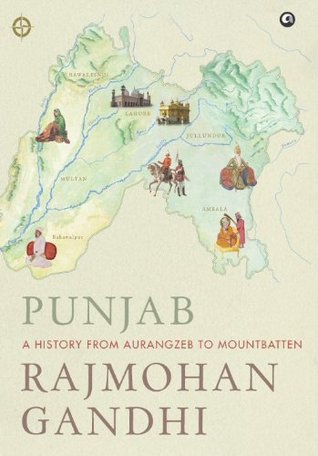More on this book
Community
Kindle Notes & Highlights
pomp
renounced
deplored
feeble-minded
intrigue. Yet for all his extraordinary inquisitiveness, which every interlocutor noticed, he did
emoluments
scarred
However, innovations in painting and literature were seen. While poets like Ahmad Yar (1768-1842), Sawan Yar and Jafar Beg wrote in Persian or Punjabi about the Maharaja, Qadir Yar (1802-1892) produced new and popular verses recounting old Punjabi tales like Sohni Mahiwal, Puran Bhagat and Raja Rasalu.
subjugated
the Company ‘had long cast covetous eyes on [Punjab]’108.
prophesied
Punjab’s leaders, on their part, were keen that the British should.
panches
insol...
This highlight has been truncated due to consecutive passage length restrictions.
paramour.
by the shattered party, but its treasury was empty. How would the Durbar pay the indemnity?
Two factors blessed the start of British Punjab. One, the province’s Muslim majority felt glad at the end of Sikh rule. Ranjit Singh was not anti-Muslim, yet his Khalsa sarkar had restricted Muslim practices. Indeed, according to Ian Talbot, ‘most of the leading Muslim families of West Punjab [had] supported the British during the Sikh Wars’.25
assuage
mutilation.
unsettling.
baronetcy.*
fiery
brethren.
exertions
furlough
flog.
approbation,
Meanwhile, to return to the Punjab Board, that august body nearly lost one of its greatest prizes, the Kohinoor diamond, which had become the property, following annexation, of Queen Victoria. Receiving firm instructions from Dalhousie for its protection, the Board had decided that the jewel would be safest in the custody of Member John Lawrence. John put the thing in his waistcoat pocket.
mortification
intractable,
fanatical
war...
This highlight has been truncated due to consecutive passage length restrictions.
audacious
tact.
Bibighar massacre.
divide et impera
Bragging by Frederic Cooper, the Amritsar DC, about what he did on 1 August shocked Lawrence. After chasing and capturing 303 out of 400 or so disarmed Hindustani sepoys who had escaped the previous day from their Lahore internment, Cooper had them shot, in batches of ten, in Ajnala, near Amritsar.
40 of the 120 were blown by guns in Peshawar on 10 June.
Except for a few events in September, when Muslim peasants of the Dhoond tribe attacked Murree in the name of Delhi’s Mughal king, and Ahmad Khan Kharal (or Kharral) led a more serious revolt in a region lying between Lahore and Multan (in today’s Sahiwal district), Punjabis, whether Muslim, Hindu or Sikh, initiated no rebellion against the British. This was in marked contrast to what happened in 1857 in places like Delhi, Awadh, the Rohilla division of today’s UP, and Jhansi.
The Peshawar-based 51st Native Infantry, also previously disarmed, was less fortunate. A rumour that the regiment’s men had obtained arms and hidden them triggered a search. While ‘the young Afghan and Sikh levies’ directed to search the 51st’s lines were performing (25 August) ‘the congenial task of looting the huts of their hereditary foes’—this is Bosworth Smith writing—the regiment of 870 men ‘rose as one man’. Facing guns, they ran towards Jamrud, near the Khyber. All 870 were killed in pursuit or, after capture, by a firing squad. ‘The whole regiment… had ceased to exist.’115
Gogera’s Ahmed Khan Kharal, a leader of the pastoral Kharal (or Kharral) tribe, was the one who, according to a British gazetteer published in 1883-84, ‘roused all the important tribes’ on the Ravi side of a district now known as Sahiwal.117
emissaries
‘turbulent’,
gazetteer
denounce
cowed,
meekly
‘swag...
This highlight has been truncated due to consecutive passage length restrictions.
ponies


